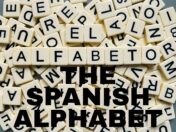How to pronounce Y and LL in Spanish: Yeísmo and Lleísmo

Get our free email course, Shortcut to Conversational.
Have conversations faster, understand people when they speak fast, and other tested tips to learn faster.
More infoSpanish pronunciation of certain letters exhibits some variety, mostly across regions but also according to other parameters such as the speakers’ age or social class. The pronunciation of the letters y and ll in Spanish is a case in point, so they’ll be the focus of today’s post.
If you’ve been learning Spanish for some time and have had the opportunity to interact with a number of native speakers, you may be wondering how to pronounce ll in Spanish, whether the y and ll in Spanish are pronounced the same way, or if they’re sometimes pronounced with y, j, or sh sounds.
In today’s post we’ll cover the various ways that the Spanish y and ll are pronounced, noting the various regions where each pronunciation is common. The different pronunciation patterns are known as yesímo and lleísmo in Spanish, so we’ll define each of these terms and break our lesson down by exploring each one.
Since y and ll are usually pronounced identically, words whose only spelling difference is y vs ll will sound the same. We’ll round out our post by comparing a selection of these Spanish homophones.
Now without further ado, let’s get started with the phenomena of yeísmo and lleísmo in Spanish!
Y and LL in Spanish
Before we even get into pronunciation, let’s begin with what we call the letters y and ll in Spanish.
First, the letter y has two names: either ye or i griega. I griega translates as Greek i, in contrast with the i latina which is another name for the letter i.
The double l in Spanish is sometimes even considered a letter on its own, with ll known as doble ele.
Yeísmo vs Lleísmo
Pronunciation of the letter y in Spanish is generally similar to the English y in “yes.”
In most Spanish-speaking regions, ll and y are pronounced the same way. This is the phenomenon of yeísmo, where the ll is pronounced like the y.
In some regions, however, ll has a distinct pronunciation, similar to English lli in “million.” This is the phenomenon of lleísmo, where the ll is pronounced closer to its English counterpart than to the Spanish y.
Now let’s take a look at both yeísmo and lleísmo in turn, with specific consideration to the various ways the Spanish y sound is pronounced.
Yeísmo
In numerous Spanish-speaking regions, the differentiation between the sounds made by y and ll has diminished, resulting in their pronunciation becoming indistinguishable. This linguistic phenomenon is referred to as yeísmo.
Nevertheless, even if the two letters are pronounced in exactly the same way, this pronunciation can also differ from one region to another. We’ll look at this more below.
Where is yeísmo used?
Yeísmo is dominant throughout the majority of Latin America, including Chile, most of Argentina, Uruguay, Mexico, Central America, Ecuador, Colombia, Venezuela, and some parts of Peru.
In Spain these days, yeísmo is also increasingly common among native speakers, especially in metropolitan areas and among younger people.
In those countries, you’ll hear native speakers saying words like yerno (son-in-law) and lluvia (rain) both pronounced with the same sound at the beginning of the word.
How is the Y sound pronounced in Spanish?
At the start of this post we mentioned that the Spanish y is pronounced like the English y in “yes.” With yeísmo, this same pronunciation applies to ll as well. But this y sound in Spanish actually exhibits a lot of variation across regions.
It’s quite common for the y pronunciation to involve more air passing between the tongue and the roof of the mouth. In many regions, the pronunciation of y and ll sounds a lot like the English j in “jump.” Try this pronunciation with the words yate (yacht) or llamar (to call).
In between the English y and j sounds, however, is a distinct dialect known as Rioplatense Spanish, in which the pronunciation of y and ll is closer to the English sh in show. Try pronouncing apoyar (to support) or amarillo (yellow) with this sh sound.
The Rioplatense dialect is concentrated around Uruguay and most of Argentina. In addition to this particular form of yeísmo, this dialect also has some notable differences in vocabulary. It’s said that these particularities can be traced back to the influence of Portuguese, Galician, and French immigrants through the 19th and 20th centuries.
Lleísmo
So far we’ve considered regions where the y and ll sounds are pronounced the same way, even if their pronunciation varies across the English y to sh to j sounds. In some regions though, the ll has a distinct pronunciation that’s closer to the English ll sound. This is the phenomenon of lleísmo, whereby there’s a clear distinction in the pronunciation of y and ll.
To see the difference, first try pronouncing cayó (he fell) with the English y sound like in yes. Now pronounce calló (he shut up), pronouncing the ll with the English lli sound like in million.” This differentiation is lleísmo!
Where is Lleísmo used?
To be clear, this phenomenon is not very common in Spanish-speaking countries. Still, lleísmo occurs widely in regions of Paraguay, Bolivia, Ecuador, Peru, and eastern areas of Colombia, as well as some in some northern areas of Spain.
If you’re interested, there’s another specific pronunciation phenomenon found in parts of Spain known as ceceo, sometimes referred to as the Spanish lisp, whereby the s sound is pronounced closer to the English th sound.
Homophones with Y vs LL in Spanish
As we’ve seen, yeísmo can result in identical pronunciations for words that are spelled with y vs ll. This pronunciation phenomenon is known as homophony, and the identically-pronounced words are known as homophones.
We have another post where we look at a big series of Spanish homophones, with a variety of spelling differences exhibiting identical pronunciation. Keeping with the focus of today’s post, let’s see a few cases where yeísmo leads us to pronounce two words the same way, even though they’re spelled differently and have different meanings.
Haya vs Halla
Haya is the third-person singular conjugation of the verb haber in the present subjunctive tense, meaning there be or there is. Haya is also the Spanish name for the beech tree. Halla is the third-person singular conjugation of the verb hallar, meaning to find, in the present indicative tense.
- I hope there’s money in the safe. – Espero que haya dinero en la caja fuerte.
- Martina finds these short stories really interesting. – Martina halla estos cuentos muy interesantes.
(When pronouncing these two words, remember that the h is always a silent letter in Spanish.)
Vaya vs Valla
Vaya is one of the irregular stems for the Spanish verb ir, meaning to go. ¡Vaya! is also used as an interjection used to express surprise or annoyance, depending on the context. Una valla is translated as a fence or a barricade in English.
- What a trip we had! – ¡Vaya viaje que hicimos!
- The house had a white wooden fence. – La casa tenía una valla blanca de madera.
(These words have yet another homophone, since the letters b and v are generally pronounced identically too: una baya is a berry.)
Hoya vs Olla
Una hoya in Spanish is translated as a pit or a hole. Una olla is a cooking pot.
- The dog was sleeping in the hole in the garden. – El perro estaba durmiendo en la hoya del jardín.
- Let’s use the big pot for the spaghetti. – Usemos la olla grande para los espaguetis.
Cayado vs Callado
Un cayado in Spanish is translated as a shepherd’s crook or a shepherd’s staff, which is a curved cane used to control sheep or goats. Callado is the masculine form of the adjective meaning quiet or reserved.
- The shepherd used his crook to guide the flock. – El pastor usó el cayado para guiar al rebaño.
- I didn’t know that Pedro was such a quiet young man. – No sabía que Pedro era un joven tan callado.
Conclusion: Pronouncing Y and LL in Spanish
Today our post focused on Spanish pronunciation, specifically looking at the sounds made by the letters y and ll in Spanish. We saw that the two are usually pronounced in exactly the same way, which is a phenomenon known as yeísmo. That being said, we also explored how this Spanish y sound can vary from one region to another, with a gradation that compares to the English y, sh, and j sounds.
Then we examined the phenomenon of lleísmo, in which the Spanish ll is pronounced differently from the Spanish y. Though it may seem easier for English speakers since this Spanish ll pronunciation is comparable to the English million, it’s actually not so common in the Spanish-speaking world. Still, it’s important to be familiar with this variation!
Finally, we compared a set of Spanish homophones that exhibit ll vs y in their spelling. Though their pronunciation is generally identical, we were sure to distinguish their unique meanings.
We understand that it may be overwhelming to encounter so much variety in Spanish pronunciation, so we hope this lesson has helped to clarify some of the challenges you may have been experiencing with Spanish y and ll pronunciation!



